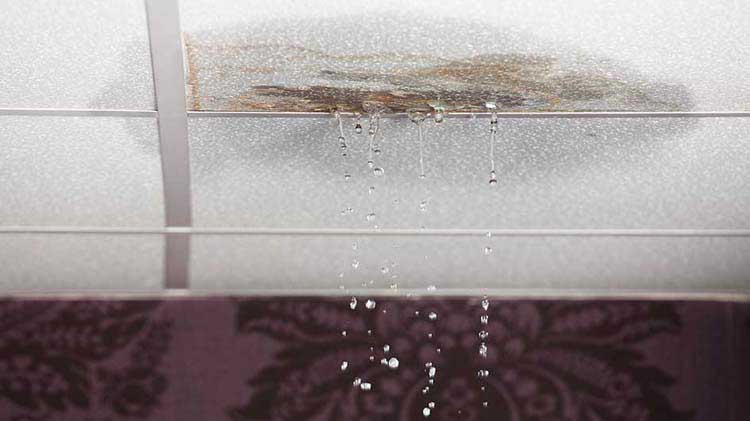A Guide to the Six Most Common Water Leak Sources in Your Home
A Guide to the Six Most Common Water Leak Sources in Your Home
Blog Article
We have encountered this post relating to Common Water Leaks In House down the page on the internet and think it made sense to discuss it with you on this page.

Leaks not just cause waste of water yet can also trigger unnecessary damages to your house as well as promote undesirable organic growth. By comprehending as well as looking for day-to-day circumstances that trigger leakages, you can secure your residence from future leakages as well as unneeded damage.
Elbowing in origins
Many water leaks start outside your home instead of inside it. If you discover an abrupt reduction in water stress, state in your tap, take time to head out and examine your backyard. You might see damp patches or sinkholes in your lawn, which might suggest that tree roots are attacking water lines causing water to permeate out. You can have your plumber check for intrusion, particularly if you have trees or bushes near your residential or commercial property.
Rusty water supply
As time passes by, your plumbing system ages and also corrosion such as rust might begin gnawing the pipelines. This might be the source of staining or bending on your water pipes. This calls for an evaluation with your plumber immediately. Think about changing the pipelines given that they are at a greater danger of deterioration than the newer designs if our plumbing system is old.
Faulty Pipeline Joints
Pipeline joints can weaken over time, resulting in water leakages. If you have noisy pipelines that make ticking or banging noises, particularly when the hot water is turned on, your pipe joints are possibly under a great deal of pressure.
Instantaneous temperature level adjustments.
Severe temperature level adjustments in our pipelines can trigger them to expand as well as acquire unexpectedly. This expansion and tightening might cause splits in the pipelines, particularly if the temperature are below freezing. It would be best if you watched on exactly how your plumbing works. The existence of the formerly stated situations regularly shows a high danger.
Poor Water Connectors
At times, a leak can be triggered by loosened hoses and also pipelines that provide your appliances. In instance of a water connections leakage, you might notice water running directly from the supply line or puddles around your devices.
Clogged Drains
Clogged drains could be frustrating and inconveniencing, but they can occasionally wind up creating an overflow resulting in burst pipelines. Keep eliminating any products that may drop your drains that can clog them to avoid such aggravations.
All the above are causes of leakages but not all water leaks arise from plumbing leakages; some leakages could come from roofing leakages. All leaks ought to be fixed quickly to avoid water damage.
Leaks not just cause waste of water but can likewise trigger unneeded damages to your home as well as advertise unwanted organic growth. By recognizing and looking for day-to-day scenarios that trigger leakages, you can shield your home from future leaks and unnecessary damages. Today, we will certainly look at six leak causes that may be triggering your pipelines to trickle.
At times, a leak can be triggered by loose pipes and pipes that provide your appliances. In situation of a water links leak, you might discover water running directly from the supply line or puddles around your home appliances.
How To Check For Water Leak In Your Home
How To Check for Leaks
The average household's leaks can account for nearly 10,000 gallons of water wasted every year and ten percent of homes have leaks that waste 90 gallons or more per day. Common types of leaks found in the home are worn toilet flappers, dripping faucets, and other leaking valves. These types of leaks are often easy to fix, requiring only a few tools and hardware that can pay for themselves in water savings. Fixing easily corrected household water leaks can save homeowners about 10 percent on their water bills.
To check for leaks in your home, you first need to determine whether you're wasting water and then identify the source of the leak. Here are some tips for finding leaks:
Take a look at your water usage during a colder month, such as January or February. If a family of four exceeds 12,000 gallons per month, there are serious leaks.
Check your water meter before and after a two-hour period when no water is being used. If the meter changes at all, you probably have a leak.
Identify toilet leaks by placing a drop of food coloring in the toilet tank. If any color shows up in the bowl after 10 minutes, you have a leak. (Be sure to flush immediately after the experiment to avoid staining the tank.)
Examine faucet gaskets and pipe fittings for any water on the outside of the pipe to check for surface leaks.
Undetected water leaks can happen without the home or business owner even realizing. If you suspect a water leak, but not able to find the source. It is time to contact a professional water leak detection service, The Leak Doctor.
How To Find a Water Leak In Your Home
https://www.leakdoctor.com/blog/How-To-Check-For-Water-Leak-In-Your-Home_AE197.html

I was shown that write-up on How to Find Water Leaks from a good friend on another web property. So long as you enjoyed reading our blog post kindly remember to pass it around. Thanks a lot for your time. Kindly check up our website back soon.
Call Us Today Report this page